Jump to recipeEl Curtido es un tipo de col relish ligeramente fermentada. Es típico en la cocina salvadoreña y la de otros países centroamericanos, y está normalmente hecha con col, cebollas, zanahorias, orégano, y a veces zumo de lima; se parece al sauerkraut, al kimchi o la tarta coleslaw.
Wikipedia
Curtido is a type of lightly fermented coleslaw. It is typical of Salvadoran cuisine and that of other Central American countries and is usually made with white cabbage, onions, carrots, oregano and sometimes chili and lime juice; it resembles sauerkraut, kimchi or sour coleslaw. Curtido is commonly eaten in El Salvador with pupusas, a national dish of thick corn tortillas filled with soft cheese, onions, refried beans or pork belly and skin.
It is also a great side dish for a barbecue, or as a probiotic snack in between meals.
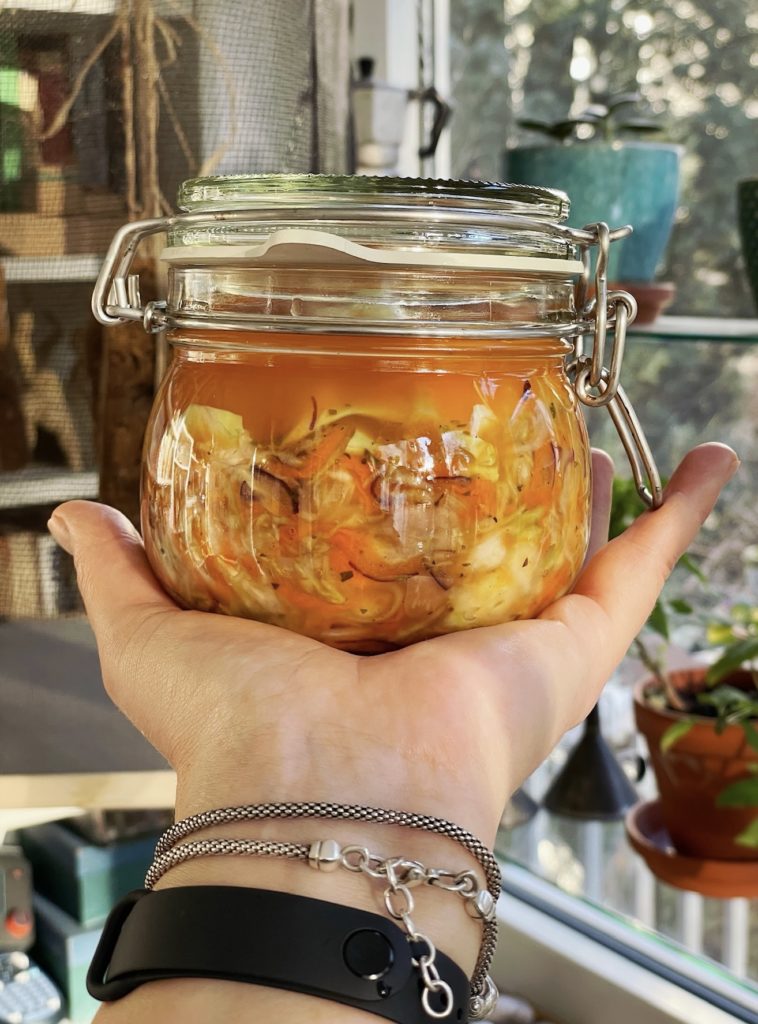
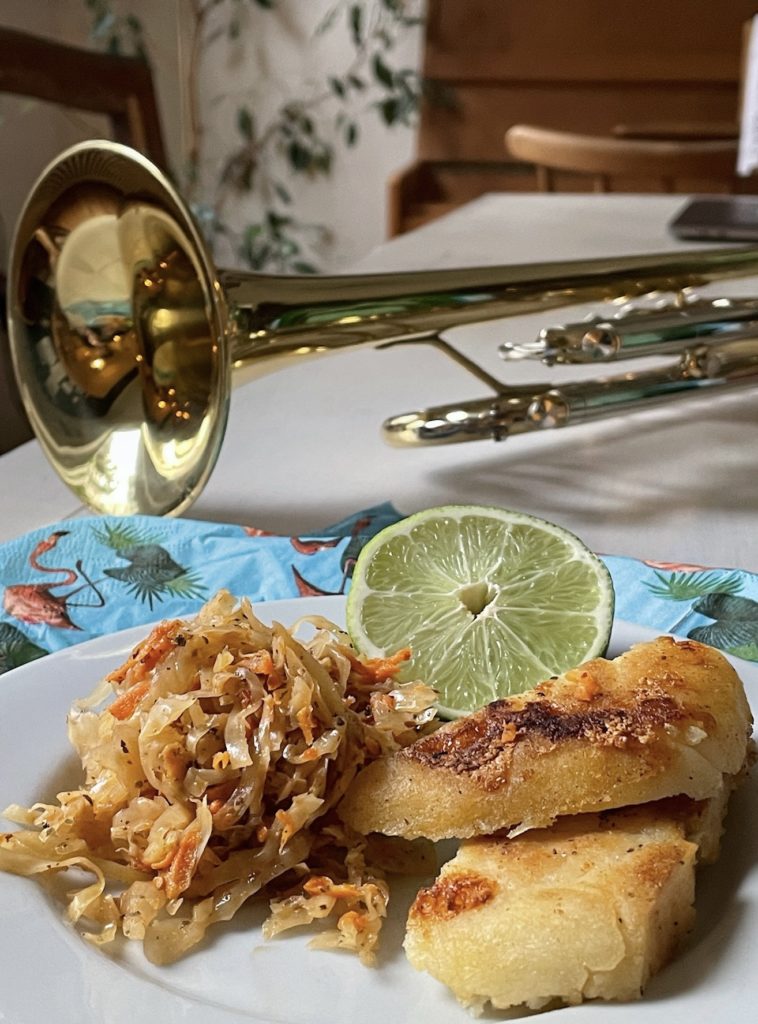
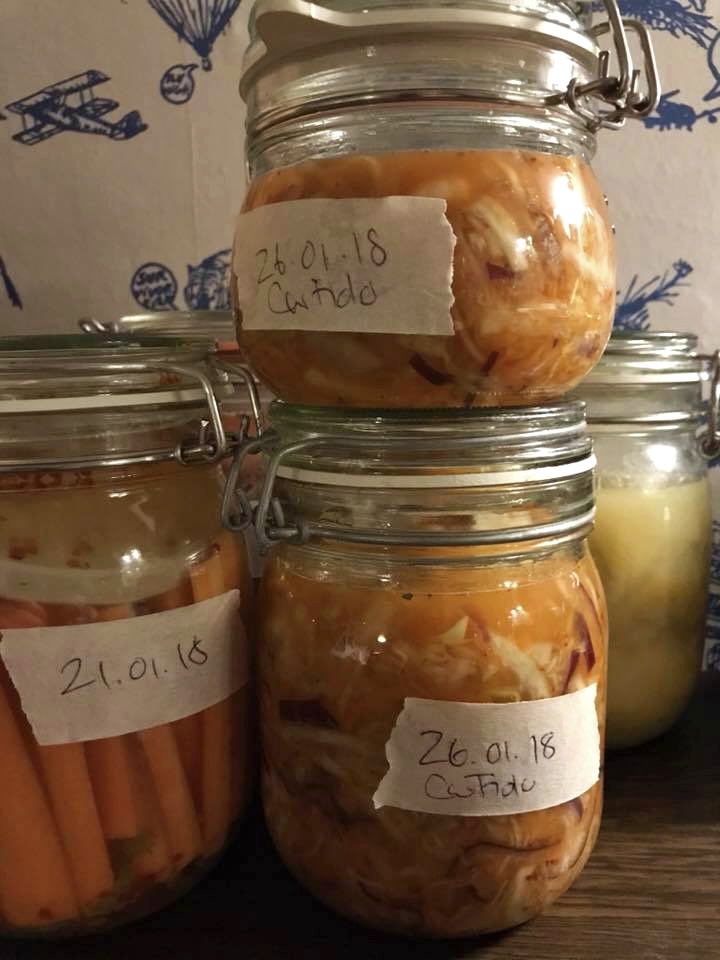
Curtido con Pupusas
My favorite way to eat curtido is the traditional way, with warm, thick, delicious and gluten-free corn tortillas, pupusas, filled with mozzarella and fried onions. Sometimes I also fill them with bean paste. The only filling I have not tried so far is with chicharrón.
INGREDIENTS
Pupusas
- 500 gr. white corn flour (masa harina)
- 450 - 500 ml hot water
- ½ - 1 tsp salt
- frying fat (lard, clarified butter or vegetable fat)
Filling
- sautéed diced onion and
- 200 gr. mozzarella or other pasta filata cheese
- or 200 gr. refried beans
- or 200 gr. chicharrón or other meat
PREPARATION
Mix the corn flour with initially 450 ml of very hot water, knead and let stand for 15 minutes. Form a test piece the size of a golf ball and flatten it. If the dough ball tears more than 2 cm at the sides, add more water. It is best to add a little water bit by bit so that the dough does not become too wet.
Divide the dough into 8-10 portions. Shape each portion into a cup, fill with the filling and close. Then carefully, preferably with hands dampened with water or lightly oiled, shape into a flat disk without letting the filling ooze out. To prevent the dough from drying out while shaping, I make the pupusas one at a time and cover the remaining dough with a damp cloth in the meantime.
Fry the tortillas with a little fat on both sides until they are golden brown.
Serve with curtido and red tomato salsa.


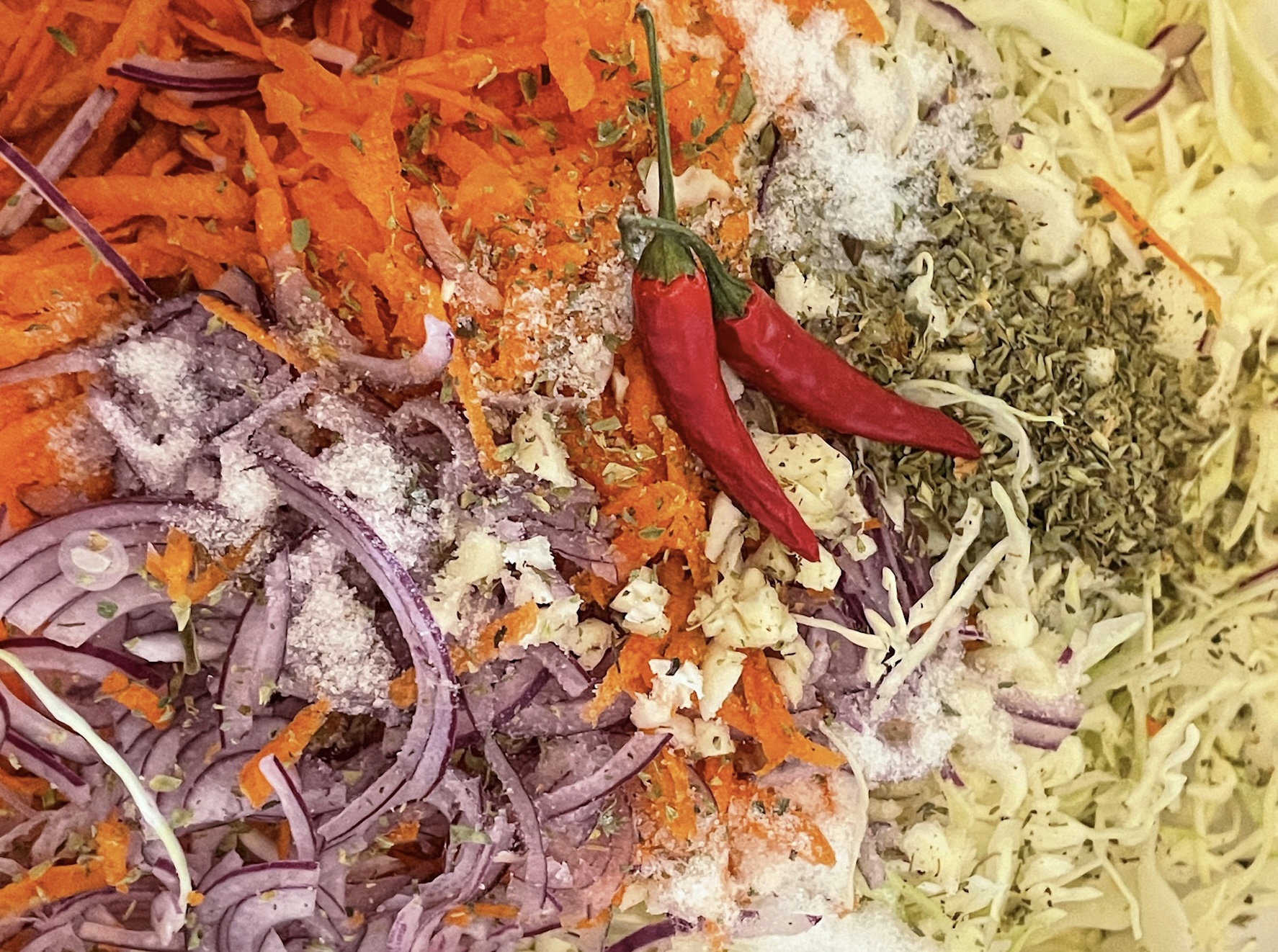

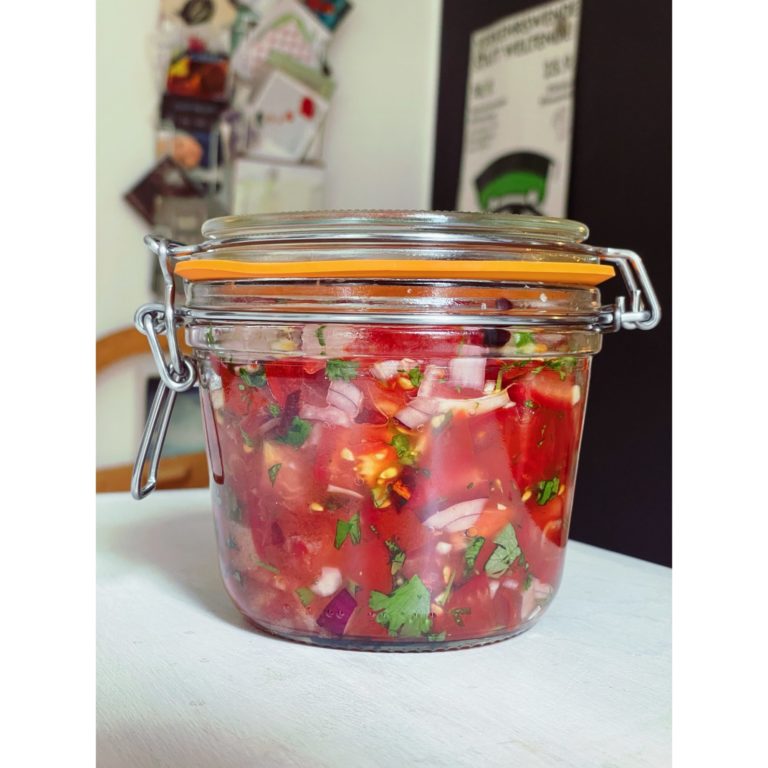
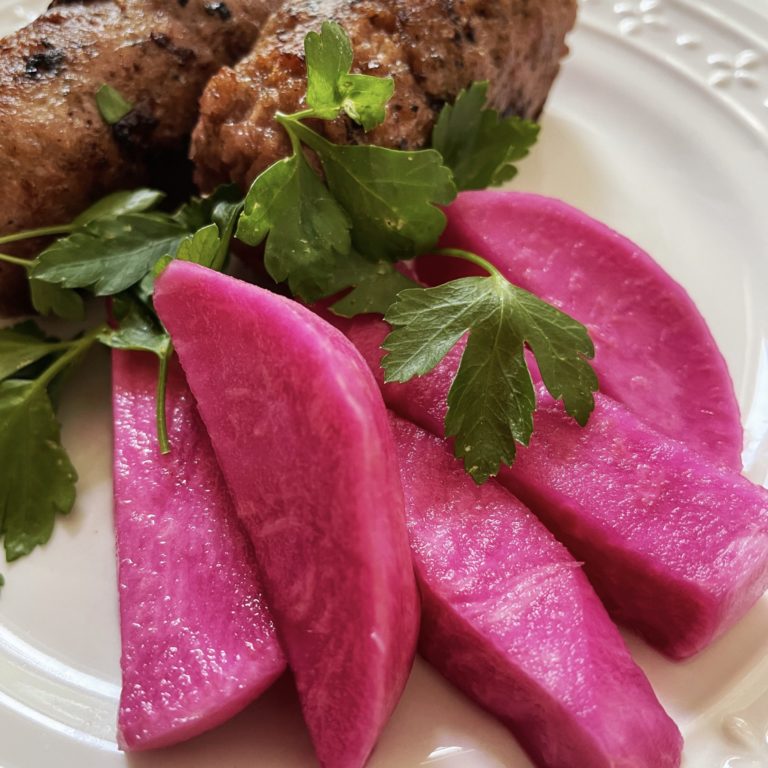
Hallo Katsu,
woher bekommst du das Masa Harina? Im Bioladen gibts nur normales Maismehl, kannst Du das auch empfehlen?
Danke und liebe Grüße!
Hej Anke,
ich kaufe das nixtamalisierte Maismehl im Afroshop. Normales Maismehl kannst Du zur Not auch nehmen, wird in der Konsistenz allerdings etwas anders werden.
Bon appétit!
Katsu
Liebe Katsu,
Welche Größe sollte ein Weckglas haben um 600gr Kohl zu fermentieren? Ich kann mir die Größenordnung noch so gar nicht vorstellen. Liebe Grüße
Hej Vanessa,
wenn du dieses Rezept machst, nimm ein 1-Liter-Glas. Mit dem anderen Gemüse ist das passend. Falls du etwas anderes machen möchtest und nur 600 gr. Kohl hast, würde ich ein 750-ml-Glas nehmen. Wenn du etwas mehr Lake brauchst, weil es sonst doch zu wenig Kohl ist, spricht nichts dagegen, sie soweit aufzufüllen, bis sie 2-3 cm unter dem Glasrand endet.
Gutes Gelingen!
Katsu
Dankeschön. Habe noch nie Kohl gemacht. Und kann ich das auch mit Spitzkohl machen oder muss es Weisskohl sein? LG
Ja, kannst du. Spitzkohl wird weicher werden und sollte kürzer fermentiert werden.
Sehr gut!
Zur Wiederholung: Sehr gut!